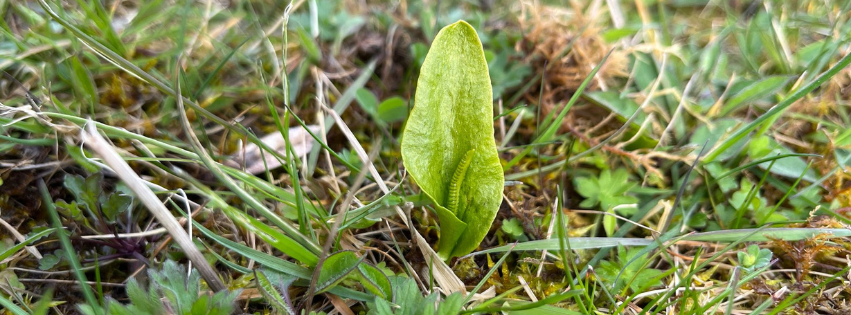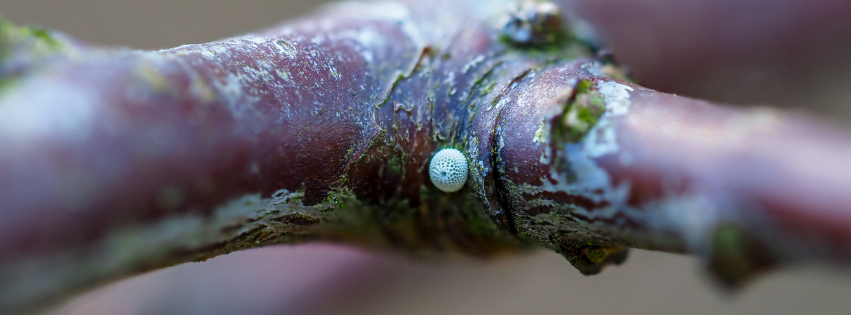
Conserving the Forest in Naunton Beauchamp
Back in November 2021, the Heart of England Forest purchased 150 acres (58 hectares) of land at Naunton Beauchamp in Worcestershire. This addition to the Forest includes arable fields, hay meadows, ridge and furrow pasture, ponds and two fields, covering 12 acres, which make up Naunton Court Meadows Site of Special Scientific Interest (SSSI).
Habitat focus
Meadows
Naunton Court Meadows SSSI are the highlight of this new land, and their management continues as it has done for decades, managed traditionally as hay meadows with a hay cut in mid-July, followed by aftermath grazing.
These meadows lie on alluvial soils over Lower Lias clays of the Jurassic period*, giving rise to neutral soils. Their special interest lies in the botanical diversity of the semi-natural grassland sward which is characteristic of a mestrophic (neutral) grassland with crested dog’s-tail (Cynosurus cristatus) and common knapweed (Centaurea nigra). The grassland is also dominated by meadow foxtail (Alopecurus pratensis), sweet vernal-grass (Anthoxanthum odoratum), bulbous buttercup (Ranunculus bulbosus), goat’s-beard (Tragopogon pratensis) and yellow rattle (Rhinanthus minor).
The southern meadow, also known locally as Gravel Pit Meadow, is notable for the presence of meadow vetchling (Lathyrus pratensis), with meadowsweet (Filipendula ulmaria), dropwort (F. vulgaris), common bird’s foot-trefoil (Lotus corniculatus) and meadow crane’s-bill (Geranium pratense). Historically the locally uncommon green-winged orchid (Orchis morio) was present, but we haven’t been able to record it since our ownership.

The northern meadow, known as Lower Sagmore Meadow, exhibits a more calcareous flora with lady’s bedstraw (Galium verum), salad burnet (Sanguisorbia minor), scattered populations of cowslip (Primula veris) and the locally uncommon adder’s-tongue fern (Ophioglossum vulgatum).
Arable fields
The fields across our land are bounded by hedgerows with field maple, midland hawthorn, spindle, dogwood and buckthorn. Blackthorn also dominants the hedges, supporting a good population of brown hairstreak butterflies (a Red List, vulnerable species).

The arable fields have been managed with very few inputs and, as such, rare arable weeds still survive here with corn buttercup (Ranunculus arvensis), stinking chamomile (Anthemis cotula), round-leaved fluellen (Kickxia spuria) and sharp-leaved Fluellen (Kickxia elatine) all recorded. Blue pimpernel (Anagallis arvensis, subsp. Foemina) and dwarf Spurge (Euphorbia exigua) were historically found; further surveys are required to see if they are still here. These rare plants are found in the disturbed ground where tractors are driven and turn at the edges of fields.
Consulting to shape the future of Naunton Beauchamp
In February 2023 we held a consultation morning at Naunton Beauchamp, with local residents invited to share their knowledge of the land. It was an opportunity to share our thoughts on future management too. We also met with neighbouring landowners, including Worcestershire Wildlife Trust and Vale Landscape Heritage Trust, as well as Upton Snodsbury Wildlife Group, Worcester & Malvern RSPB Group, Vale, Worcestershire Recorders, and local arable and sheep farmers.

Data and surveying
The local RSPB group have been surveying birds on the land and volunteers are also undertaking butterfly surveys. Despite a national decline in butterfly numbers, 18 species have been recorded here. View the full list below:
The ponds have also been surveyed for aquatic invertebrates with 27 species recorded including a few riverine species. Small newt and sticklebacks are also present.
Nurturing Naunton Beauchamp
With the local landscape supporting a cluster of semi-improved grasslands, it is important we conserve what is on our land too. We will continue the traditional hay meadow management and use the botanically rich green hay to spread on our adjacent fields to improve their floristic diversity. New areas of grassland will also be created to buffer the SSSI fields.
With traditional orchards being a feature of the area, our plans include creating a new orchard within the centre of our land adding to the availability of pollen and nectar sources for pollinating insects.
A cultivated arable strip with winter bird seed mix is incorporated into our plans, providing seed for overwintering birds as well as the ground disturbance needed to support rare arable weeds. With three ponds present then plans will include pollarding the willows to ensure their longevity and removal of the build-up of silt, where possible. Gaps in the hedgerows will also be replanted and new native broadleaved woodland created.
The goal is to plant 40k trees and shrubs this winter, creating a mixed diverse woodland. Most of the species we plant are native, these include oak, birch, willow, alder and field maple. We also plant shrubs such as dogwood and spindle. There are some naturalised species such as wild pear, sweet chestnut and sycamore which will grow well and help diversify the woodland which will also be planted.
The fields at Naunton Beauchamp are in an area of intensively managed agricultural ground. There is very little woodland in this area, so the creation of a new native woodland will bring some diversity into the landscape, with lots of benefits that trees provide. These include becoming a haven for biodiversity – lots of insects, birds and mammals will start to move into the woodland as it develops in an area which is lacking in opportunities for species to establish and flourish.
We are keen to continue to work closely with our neighbours, growing the Forest, protecting and enhancing the land for wildlife, and contributing to nature recovery in Worcestershire.
*The earth underlying the meadows is derived from an ancient river system that flowed over marine clay layers laid down in the Jurassic (Lower Lias) period, thus creating neutral soils.



